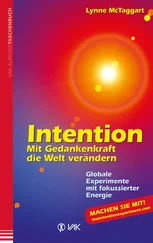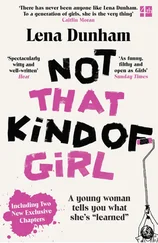Even if studies have been done demonstrating that a treatment is ineffective or even downright dangerous, so powerful is this faith that these results often get ignored. Virtually every good study of foetal monitoring – devices employing ultrasound testing supposedly to measure the condition of the foetus during labour and birth – all show that this procedure produces a worse outcome for mother and child. 12This information appears well known to many senior obstetricians – the former head of the Oxford Perinatal Unit repeatedly has written widely about this fact – yet foetal monitors continue to be employed in every delivery room in the land. We know what we’re doing is right.
This is probably why doctors make such rotten logicians. Many in medicine get tied into logical knots, attempting to justify apparent contradictions with the most arcane Alice-in-Wonderland reasoning. Robert Mendelsohn used to say that his favourite line spouted by doctors was: ‘Breastfeeding is best, but bottlefeeding is just as good.’
‘High serum cholesterol levels are an important risk factor for coronary disease,’ once wrote noted heart researcher Dr Meir J. Stampfer of the Harvard School of Public Health, repeating the prevailing view. In the next breath, however, he added, parenthetically: ‘but most patients with [heart attacks] have normal cholesterol levels’ (my italics). 13
The faith in the infallibility of their tools allows doctors to adopt as the ‘gold standard’ what are usually little more than experimental treatments, and employ these on millions before their effects are fully understood or the procedure has stood the test of time. The favourite line of doctors, when steam-rolling ahead without proof, is that if they had always waited until they had proper evidence, goodness knows how many advances in medicine would have been held up (and how many millions of people would have died). That argument does not, of course, take into account the vast number of people who have died taking unproven treatments later found to be dangerous. The new Cox 2 arthritis drug Vioxx, one of the biggest money spinners of all drugs, was withdrawn by its manufacturers Merck after it was discovered that it doubled the risk of heart attacks. Still others, such as amalgam in dental silver fillings and the radical mastectomy, are treatments devised a century ago and never properly tested or reviewed to determine whether they are as safe or effective as has always been presumed.
Medicine as it is now practised relies entirely on numbers. When judging the worth of any treatment, researchers must weigh the risks of the drugs or treatments (and all treatments in orthodox medicine carry some risks) against their likely benefits and against the risk of the illness being treated. A drug known to be effective but with serious side-effects might be worth taking if you have a life-threatening illness, but not if your medical problem is a hangnail.
Medical science is, in the main, a triumph of statistics over common sense. When bumping up against unpalatable truths in the study, medical scientists, who again always assume a medical treatment to be beneficial, are inclined to put the best face on the whole exercise, or cut and paste, refine and edit, to fit the premise or explain away an undesirable result.
Some years ago, a large study from the Netherlands Cancer Institute showed that all women taking the Pill, no matter what their age, had an increased risk of breast cancer. Most worryingly, 97 per cent of women under aged 36 who contracted breast cancer had taken the Pill, for any length of time. 14For more than 30 years, doctors have been touting the Pill as the safest drug ever developed. The Dutch study, now the fifth and possibly most damning to show a link between the Pill and cancer, was a colossal embarrassment to an entire industry devoted to contraception at all costs.
However, once they trumpeted the negative findings in the beginning of their article, the Dutch researchers began back-pedalling, by qualifying the overall implications of their findings. They emphasized that the increased risk mainly occurred among certain subgroups. Because the numbers supposedly showed no increased risk of breast cancer after long-term use among women in their latter thirties, their study was, in effect, good news: ‘Our findings accord with the mass of evidence that [oral contraceptive use] by women in the middle of their fertile years [25–39 years] has no adverse effect on breast cancer risk’ (my italics).
Doctors can often minimize the risks of drugs by magnifying the risk of not using them. Most studies have been able to justify that the Pill is safe by turning pregnancy into a dangerous disease. This risk-benefit equation only works if you believe it is better to risk breast cancer, cervical cancer, a stroke or thrombosis – all known risks associated with the Pill – than to have an unwanted baby or to use a condom instead.
A spokeswoman from the British Family Planning Association, which has probably handed out its fair share of Pills to teenagers, dismissed any breast cancer risk out of hand, arguing that this theoretical risk had to be weighed against the ‘evidence that the Pill protects against endometrial and ovarian cancer’. 15This is a typical example of medical reasoning. This drug is beneficial because it may ‘protect’ you against one kind of fatal cancer (a highly questionable conclusion, in any event), even though it may give you another potentially fatal cancer.
And because they live and breathe medicine by numbers, and believe in the infallibility of their tools, doctors are willing to hand out dangerous medication on the confident assumption that new tests will pick up any side-effects that they cause, and yet other drugs will be able to treat these new problems. Hence the reason why family planning enthusiasts will usually patiently explain that, even though the Pill may cause cervical cancer, cervical smears should pick up early changes, at which stage things are mainly treatable. Like many in medicine, they make the fatal error of requiring medicine to be infallible. This reasoning works if a test that can be wrong more than half the time picks up the cancer early, and if medicine can always cure cancer, which thus far it has singularly failed to do.
This kind of tortuous logic was once used to minimize evidence showing a link between vasectomy and the development of prostate cancer. The two studies, which examined over 74,000 men who had had vasectomies, showed that vasectomy increases the prostate cancer risk by 56 to 66 per cent. 16Those patients who’d had their operation done 20 years ago faced a whopping increase in risk of between 85 and 89 per cent. In other words, having a vasectomy 20 years ago nearly doubles your risk of getting cancer.
Pretty damning evidence, one would have thought. Nevertheless, after it was published, some professional magazines encouraged doctors to tell their patients that the risk of prostate cancer following a vasectomy was minimal. The article attempted to claim that, compared to other methods of birth control ( the condom? natural family planning? ), vasectomy is ‘still one of the safest’. A Family Planning Association spokesperson concurred: ‘These studies do not tell us that vasectomy causes prostate cancer’ (again, my italics).
A similar situation has occurred with HRT. Although two major studies were stopped when it was found that women on HRT are more likely to have heart attacks, cancer and stroke, the British medical establishment refused to recant or admit that this might not be the treatment of choice for women going through the menopause.
Doctors and medical researchers have been known to hype up the risks of a disease compared with the risks of the drug used to treat it. Dangerous drugs look good if you turn an ordinarily benign problem into a killer disease. In 1992, the UK Department of Health (DoH) announced the hasty withdrawal of two of the three brands of the combined measles, mumps and rubella (MMR) vaccines. The official line circulated to the press about why these drugs were withdrawn, after having been jabbed into millions of 15-month-olds, were allegedly the results of a study showing that the two withdrawn brands had a ‘negligible’ (1 in 11,000) risk of causing a ‘transient’ and ‘mild’ (all DoH words, these) case of meningitis. The third brand, made from a different strain of the mumps virus, supposedly did not pose this risk.
Читать дальше




![Ally Carter - [Gallagher Girls 01] I'd Tell You I Love You But Then I'd Have to Kill You](/books/262179/ally-carter-gallagher-girls-01-i-d-tell-you-i-lo-thumb.webp)







